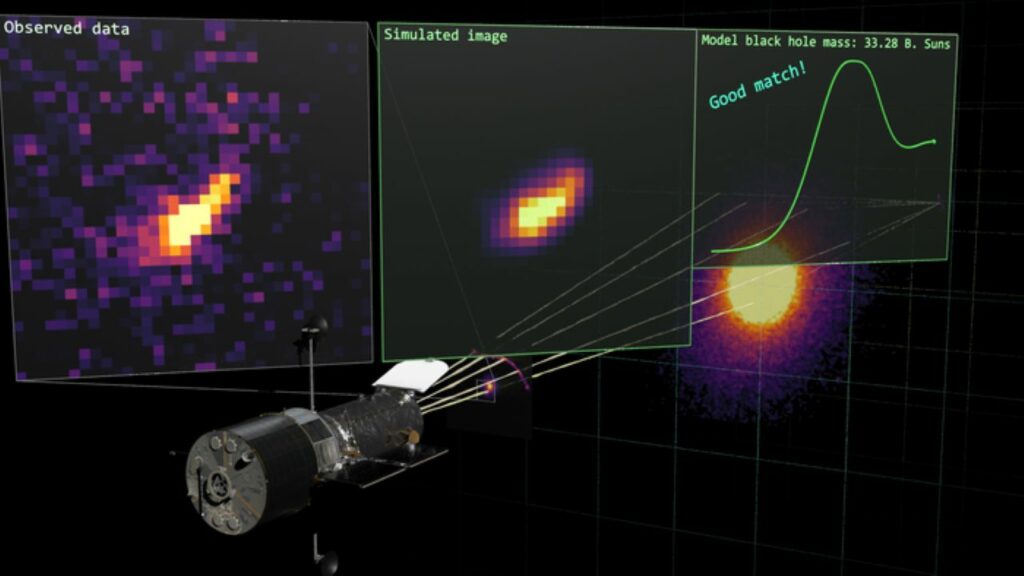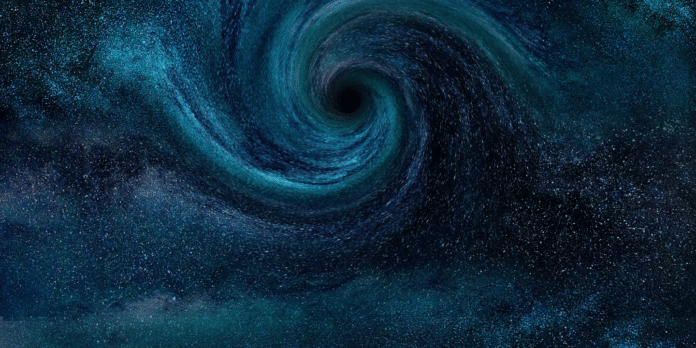Using a phenomenon called gravitational lensing and supercomputer simulations, a team of astronomers led by Durham University, UK- has discovered one of the biggest black holes ever found. This ultramassive black hole has over 30 billion times the mass of our sun.
The team has discovered this first black hole in a foreground galaxy, using a method that replicates light traveling across the universe countless times. The mass of the black hole in each simulation varies, altering the light path toward Earth. The team made the simulations on the DiRAC HPC facility. This allows them to determine how light bends by a black hole inside a galaxy hundreds of millions of light-years from Earth.

The path that the light from the distant galaxy took to reach Earth when the researchers incorporated an ultramassive black hole in one of their simulations matched the path shown in actual images collected by the Hubble Space Telescope.
Lead author Dr. James Nightingale, Department of Physics, Durham University, said, “This particular black hole, which is roughly 30 billion times the mass of our sun, is one of the biggest ever detected and on the upper limit of how large we believe black holes can theoretically become, so it is a fascinating discovery.”
The research, which also involves the Max Planck Institute in Germany, raises the intriguing possibility that astronomers will find a lot more inactive, ultramassive black holes than previously believed and will be able to study how they evolved to be so big.
Journal Reference:
- James Nightingale et al, Abell 1201: Detection of an Ultramassive Black Hole in a Strong Gravitational Lens, Monthly Notices of the Royal Astronomical Society (2023). DOI: 10.1093/mnras/stad587
